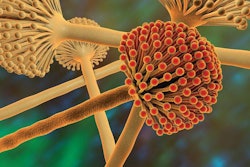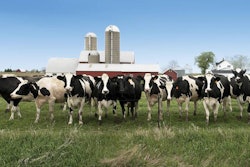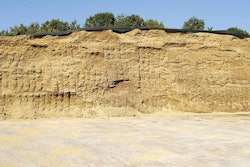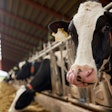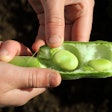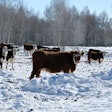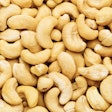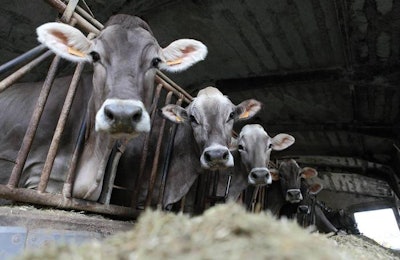
The transition period is probably one of the most critical times in the dairy cow's production cycle. Physiologically, the animal is firstly preparing for, then experiencing, calving and lactation and all the demands, both physically and emotionally, that the cow has to deal with. Hormonal changes and a greatly increased demand for energy and nutrients means that the cow must make use of body reserves to meet targets, such as producing milk. Management through the late dry period and very early lactation has a substantial impact on the cow’s ability to respond to these demands without detrimental effects on her health and well-being.
Ketosis during transition
Ketosis is a result of inadequate energy available in the form of glucose, meaning the animal must burn residual fat in order to keep up with physiological energy demands. When the amount of fat being metabolized at any one time is excessive, then production can be diverted to more rapid production of ketone bodies as a source of energy. Affected animals exhibit reduced dry matter intake (DMI), lethargy and weight loss.
One key sign is the smell of pear drops on the animal’s breath from the elevated level of ketones in the blood. Treatment involves raising glucose levels in order to reduce energy generated from fat and body tissue. Ketosis can occur at any time in very early lactation, but occurrence often peaks at around 20 to 30 days. Risk factors for ketosis, include not only inadequate energy intake, but also poor or excessive body condition during the transition period.
Aim to prevent hepatic lipidosis
Often associated with the occurrence of ketosis, hepatic lipidosis, or fatty liver, is the storage of excess fat in the liver. Cows with excessive energy intake during the dry period leading to a higher-than-optimal body condition score are at risk of fatty liver. Additionally, animals in significant negative energy balance (NEB) will mobilize body fat and tissue releasing free fatty acids to use as a source of energy, as mentioned previously.
As the ruminant liver has a limited capacity for utilizing fatty acids, they accumulate in this organ. While there are no specific outward clinical signs of hepatic lipidosis, it resembles those for ketosis and often occurs concurrently with other metabolic disorders, such as ketosis, hypocalcaemia and DA.
Prevention is most definitely better than cure for this disorder.
Treatment for first-stage hypocalcaemia
With the initiation of lactation there is a substantial increase in the requirement for calcium in order to meet demands for milk synthesis. In situations of low blood calcium, parathyroid hormone (PTH) stimulates the resorption of calcium into the blood, as well as increased the absorption of calcium from the gut. Magnesium is involved in PTH activity, hence the importance of adequate levels of this mineral in the diet of dry cows. Clinical hypocalcaemia, or milk fever, tends to follow three stages and treatment at the first stage is critical.
Subclinical hypocalcaemia is defined as low blood calcium concentrations (< 2 mmol/l) without clinical signs. This is often associated with significant NEB, which may partly explain why affected cows are greater risk from other diseases, such as DA and ketosis. Hypocalcaemia occurs shortly post-calving and tends to be more common in cows in their third and subsequent lactation.
The underlying cause is usually inappropriate mineral nutrition during the dry period. Use of inappropriate forages resulting in high levels of calcium and potassium being fed also contribute.
Treatment is the restoration of circulating calcium levels.
Nutrition, stress contribute to RP
Failure of the placenta to detach from the uterine wall within 24 hours of calving defines retained placenta (RP). Normal separation and expulsion usually occur within three to eight hours post-calving. Numerous causes exist for RP, including mineral imbalances or deficiencies (e.g. selenium), excessive body condition, infectious disease, difficult calvings and other metabolic issues, including hypocalcaemia.
Essentially, anything that affects the mechanism of placental separation will increase the risk of RP (this, rather than uterine motility is responsible for placental detachment). Stress also contributes to increased risk, for example, poor cow comfort and heat stress. Attempts to remove the placenta by hand are not recommended and affected animals will tend to expel membranes in two to 11 days.
Signs of displaced abomasum
As the name suggests displaced abomasum (DA) describes the shifting of the abomasum out of its normal orientation. This can be either to the left or the right, although left DA is more common.
In the case of left displacement, the abomasum slides underneath the rumen and round to the left hand side. Displacement can be caused by insufficient roughage, allowing the abomasum to move or it can be physically pushed round by the growing foetus. Bloat and anything that upsets normal gut motility can also increase the risk of DA. Hypokalaemia, hypocalcaemia, as well as other concomitant diseases are contributing factors.
Inappentence, reduced milk production and rumen and gut hypomotility are all signs of a DA, most of which occur within the first 30 days post-calving. Treatment usually involves surgery but, in mild cases, DAs can often be rectified by rolling the animal.
Laminitis prevention
Laminitis relates to inflammation of the sensitive laminae in the hoof or claw and is a multifactorial issue. Causes can be physiological (e.g. excess amounts of rapidly fermentable carbohydrates in the diet resulting in acidosis) and/or physical (e.g. trauma to the claw tissues). Pathogenesis and aetiology of laminitis in cattle is not fully understood, but it is known that numerous biological markers are involved. Regular claw trimming and culling of persistent offenders is the more common treatment but prevention is by far the target.
Appropriate nutrition and cow comfort are critical as for most other metabolic disorders.
Management is the key
Numerous metabolic disorders plague the dairy cow, from those that have a systemic effect to those that are localised. Either way, they cause discomfort, pain and negatively impact the animal’s health, welfare and, ultimately, productivity. One common theme throughout this article in relation to prevention or, at the very least, minimizing the incidence of metabolic diseases is management. Appropriate nutrition, together with reduced environmental and emotional stress are key to reducing these welfare issues.
References available upon request.


